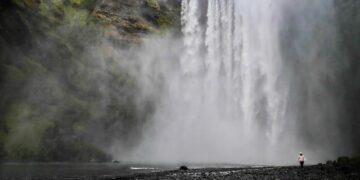Understanding the Science of Reading: A Focus on Summit County
The Essential Role of the Film ‘The Right to Read’
A powerful documentary titled “The Right to Read” is shining a light on the critical importance of reading education in communities like Summit County. This film delves into the science of reading, highlighting methodologies that promote literacy and addressing significant obstacles many students face.
Engaging Dialogues through Community Panels
Following screenings of “The Right to Read,” panels have been organized that engage local educators, parents, and literacy advocates in meaningful discussions. These forums allow participants to explore effective reading techniques grounded in research while providing a platform for addressing pressing educational challenges specific to their region.
Evidence-Based Reading Approaches
Today’s educational landscape is increasingly recognizing the need for evidence-based strategies in teaching literacy. Research indicates that nearly 65% of students struggle with reading proficiency by fourth grade nationally, which underscores an urgent need for systemic change in pedagogical practices across schools.
A Shift Towards Phonics and Comprehension
Where traditional methods may fall short, contemporary approaches emphasize phonics as a foundation for literacy development. Programs that integrate systematic phonics instruction with comprehension strategies are proving effective; districts adopting this hybrid model see dramatic improvements in student performance metrics.
Local Impact: Statistics from Summit County
In Summit County specifically, recent assessments reveal that only about 57% of third graders meet state reading standards—a call-to-action for educators and community stakeholders alike. Initiatives launched post-screening aim at mobilizing parents and teachers towards adopting proven instructional components that facilitate better outcomes as children progress through school systems.
Strategies for Creating Literacy-rich Environments
Building a culture centered around literacy extends beyond classroom walls. Parents can foster environments rich with books at home; schools can partner with local libraries or organizations focusing on children’s literature events aimed at enhancing engagement among young readers—all integral facets contributing to long-term success in mastering reading skills.
Conclusion: Fostering Literacy Together
“The Right to Read” offers not just insight but an opportunity—an avenue toward making tangible differences within our communities’ educational frameworks regarding literacy acquisition. By embracing successful pedagogical practices viewed through the lens provided by this documentary along with collaborative efforts within our neighborhoods, we create pathways leading all children towards achieving proficient levels in their reading journey.































